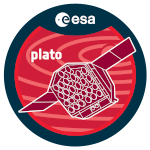A star seen as a multi-cavity acoustic interferometer: a novel approach to develop seismic diagnostic
The seismic data collected by the space-borne missions CoRoT, Kepler, and TESS, have already brought stringent constraints on the structure of low- and intermediate-mass stars. Beyond the improvement in the determination of fundamental stellar parameters (e.g., mass, radius, age), asteroseismology has also given insights into the internal dynamics of these stars, as for instance rotation or convective-radiative boundary mixing, opening a new era for the theory of stellar structure and evolution. These advancements have been made possible thanks to the development of seismic diagnostics, which enable us to analyze, predict and interpret the oscillation spectra of stars. However, all the richness of these observations has not been fully explored yet. As a striking example, we can note the recent measurement of internal magnetic fields in a few red giant stars observed by the satellite Kepler, and more surprises are still expected for the future. With the PLATO mission in our line of sight, it is now time to pave the way toward a more detailed probing of the oscillation spectra, at the limit of the measurement capabilities. In this work, we show how the general formulation of the stellar eigenfrequency spectra proposed by Pinçon & Takata (2022) can help develop new or reinforce previous seismic diagnostics. In this general picture, a star is described as a multitude of resonant cavities separated by reflective barriers (i.e., evanescent coupling regions or sharp variations in the reference propagation medium). The wave reflection-transmission problem around these so-called barriers is studied using either simple analytical toy models or numerical solvers when considering a realistic acoustic structure. We demonstrate how useful and practical is this approach. In particular, the case of mixed mode in subgiant stars, which represent thousands of targets in the PLATO prime sample, and in red giants stars will be addressed.
|
|
|
|
A star seen as a multi-cavity acoustic interferometer: a novel approach to develop seismic diagnostic
1 : IAS - Paris-Saclay IAS Université paris XI
|

 PDF version
PDF version
